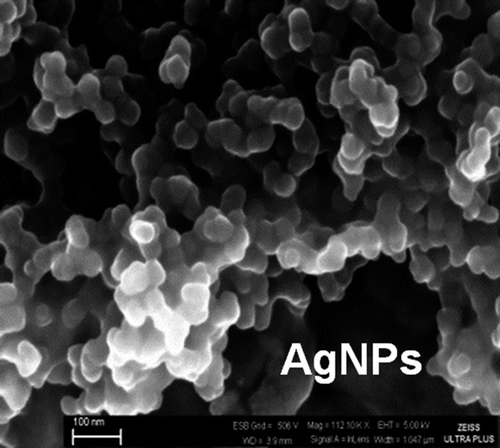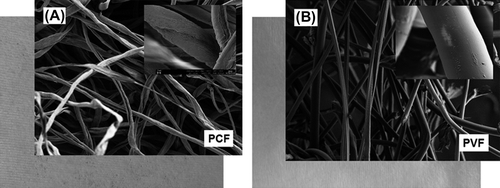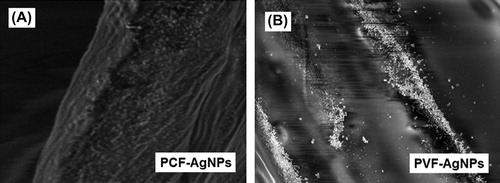Figures & data
Figure 4. Representative optical photographs showing the results obtained in a “disk diffusion assay”. (A) for S. aureus and (B) for E. coli. The plates numbered from 1 to 5 contain nonwoven cotton-based fabrics loaded with different amounts of AgNPs. The Plate #6 carries only the PCF fabric without any AgNPs loading.

Table I. Anti-biogram data obtained in the “disk diffusion assays” for PCF and PVF containing different amounts of AgNPs and for two different bacteria: S. aureus and E.coli.
Figure 5. Real-time monitoring of interaction of L929 fibroblast cells in culture with: (A) AgNPs nanoemulsion with different concentrations; (B) PCF loaded with AgNPs; and (C) PVF loaded with AgNPs. The numbers on the graphs represent: (0) only medium or fabric (no AgNPs); and (I)–(VII) AgNPs concentrations: 6.25, 12.5, 25, 50, 100, 200 and 400 ppm, respectively.
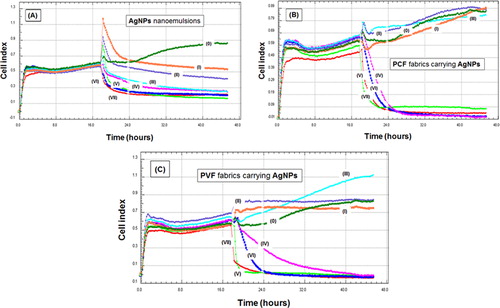
Figure 6. Fibroblast cell viability after incubation with: (A) AgNPs nanoemulsions with different concentrations (6.25–200 ppm); (B) PCF loaded with AgNPs; and (C) PVF loaded with AgNPs. “0” shows the case where only medium or fabrics (no AgNPs) were used.
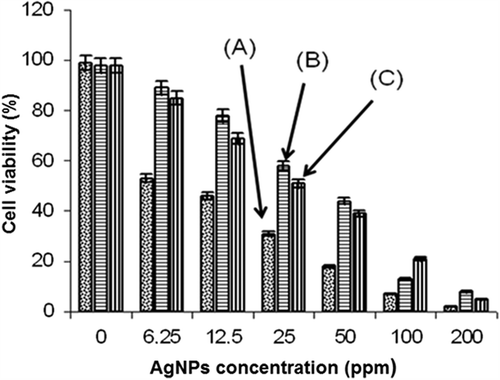
Figure 7. Representative fluorescence microscopy images showing the necrotic L929 cells after interaction with: (A) only medium or the plain fabrics (no AgNPs); (B) AgNPs nanoemulsions; (C) PCF loaded with AgNPs; and (D) PVF loaded with AgNPs. The healthy cells look all blue (stained with the Hoechst 33342 dye) – means no necrotic effect. The red color (stained with propidium iodate) demonstrates the necrotic cells (indicated also with arrows). Magnifications are 200x and the scale bar is 40 μ.

Table II. Necrotic cell percentages obtained with AgNPs and PCF and PVF containing different amounts of AgNPs.

